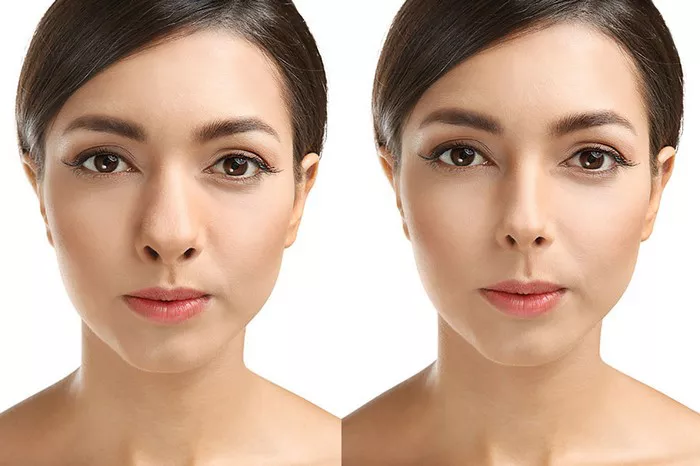Rhinoplasty, a transformative cosmetic procedure aimed at reshaping and enhancing the nose’s form and function, offers individuals an opportunity to achieve their desired facial aesthetics. Within the realm of rhinoplasty, two primary techniques—open and closed—have emerged, each with its unique approach and considerations. This comprehensive exploration delves into the intricacies of open and closed rhinoplasty, shedding light on the procedural disparities, recovery experiences, and the factors influencing the choice between these techniques.
Understanding the Fundamentals: Open Rhinoplasty Unveiled
Open rhinoplasty, also known as external rhinoplasty, involves making an incision across the columella—the strip of skin between the nostrils. This technique allows the surgeon to lift the nasal skin, providing a direct and unobstructed view of the underlying nasal structures. The open approach offers enhanced visibility and accessibility, enabling precise modifications to the nasal framework. Surgeons often choose open rhinoplasty for complex cases requiring intricate adjustments or for patients seeking extensive changes to the nasal structure.
The procedure commences with a carefully planned incision, discreetly placed to minimize visible scarring. Once the incision is made, the surgeon gently elevates the nasal skin, revealing the underlying cartilage and bone. This unobstructed view facilitates meticulous adjustments to refine the nasal tip, correct asymmetry, or address structural issues. While open rhinoplasty provides unparalleled precision, it typically results in a longer recovery period due to the comprehensive nature of the modifications made.
Navigating the Nuances: Closed Rhinoplasty in Detail
Closed rhinoplasty, often referred to as endonasal rhinoplasty, represents a more discreet approach, minimizing external incisions. In this technique, all incisions are made within the nasal passages, eliminating the need for an external cut across the columella. The closed approach is particularly suitable for patients requiring minor to moderate adjustments to their nasal structure. Surgeons opt for this technique when the desired modifications can be achieved without the need for extensive visibility.
The absence of an external incision means that scarring is virtually imperceptible. Closed rhinoplasty appeals to individuals seeking subtle alterations to their nasal appearance with a quicker recovery timeline. While the closed technique limits direct visibility of the nasal structures, advancements in surgical instruments and techniques enable skilled surgeons to perform a wide array of modifications with precision through this more confined approach.
Comparing Visibility: The Role of Incision Placement
A pivotal distinction between open and closed rhinoplasty lies in the visibility afforded to the surgeon during the procedure. Open rhinoplasty’s advantage is the unimpeded view of the nasal structures, allowing for intricate adjustments. The columellar incision provides a direct line of sight, enabling the surgeon to assess and modify the nasal tip, bridge, and septum with heightened accuracy. This approach proves beneficial for addressing complex cases, revision surgeries, or instances where comprehensive modifications are warranted.
Conversely, closed rhinoplasty relies on internal incisions, limiting direct visibility. Surgeons navigate the nasal passages using specialized instruments, relying on their experience and tactile feedback to perform modifications. While this approach is suitable for certain cases, it may pose challenges for intricate adjustments that necessitate a more extensive view of the nasal anatomy.
Recovery Perspectives: Open vs. Closed
Recovery experiences differ between open and closed rhinoplasty, primarily influenced by the extent of surgical intervention and the chosen technique. Open rhinoplasty, involving more comprehensive modifications, generally entails a longer recovery period. Patients may experience swelling and bruising, with visible changes taking longer to manifest. While discomfort and downtime are extended, the results often justify the additional recovery time for those seeking significant nasal transformations.
Closed rhinoplasty, characterized by its more conservative approach, typically results in a shorter recovery duration. Patients may still experience mild swelling and bruising, but the confined nature of the modifications often leads to a quicker resolution of these postoperative effects. Individuals desiring subtle changes to their nasal appearance with less downtime often find closed rhinoplasty to be a favorable option.
Factors Influencing Technique Selection
The choice between open and closed rhinoplasty is influenced by a myriad of factors, and a thorough consultation with a board-certified plastic surgeon is essential to determine the most suitable approach for each patient. Some key considerations include:
Complexity of Modifications: For intricate adjustments, extensive corrections, or revision surgeries, open rhinoplasty’s enhanced visibility may be preferred.
Desired Outcome: Patients seeking comprehensive changes to their nasal structure may opt for open rhinoplasty, while those desiring subtle alterations may find closed rhinoplasty more fitting.
Surgeon’s Expertise: The surgeon’s experience and proficiency with both techniques play a crucial role in determining the most appropriate approach for a given case.
Recovery Preferences: Patients with a preference for a quicker recovery and minimal scarring may lean towards closed rhinoplasty, while those prioritizing comprehensive modifications may accept the longer recovery associated with the open technique.
Structural Considerations: The unique anatomical characteristics of an individual’s nose also influence the technique selection, as certain structural issues may be better addressed with one approach over the other.
Navigating Patient Expectations
Ultimately, the decision between open and closed rhinoplasty is a collaborative one, involving thorough discussions between the patient and the surgeon. A comprehensive consultation allows the surgeon to assess the patient’s nasal anatomy, understand their aesthetic goals, and recommend the most suitable technique. Patients, in turn, can express their expectations, preferences, and concerns, ensuring a shared understanding of the chosen approach and anticipated outcomes.
Conclusion
In conclusion, open and closed rhinoplasty represent distinctive approaches to nasal enhancement, each offering its set of advantages and considerations. The choice between these techniques is highly individualized, hinging on factors such as the complexity of modifications, desired outcomes, recovery preferences, and the surgeon’s expertise. As individuals embark on their rhinoplasty journey, a nuanced understanding of these techniques empowers them to make informed decisions aligned with their aesthetic aspirations and recovery expectations. By fostering open communication with their plastic surgeon and participating in the decision-making process, patients can navigate the intricacies of rhinoplasty and achieve results that harmonize with their unique facial features.


